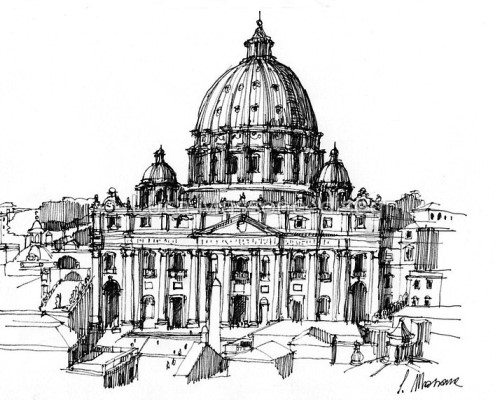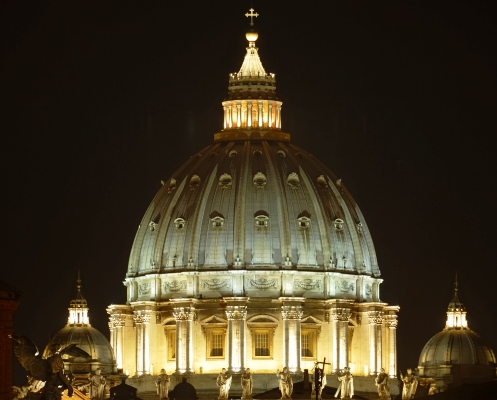| St. Peter's Basilica St. Peter's Basilica stands on Vatican Hill, in Rome. Today it is a wonderful building, the goal of a pilgrimage, a symbol of the Vatican, and the center of Catholicism, where the papal celebrations take place. The Basilica has a long history. Underneath it, there is an ancient cemetery, called the "necropolis"; archaeologists think that Saint Peter is buried there. Emperor Constantine is the one who wanted to build a basilica on the necropolis and Peter's tomb in honor of the Apostle. |  |
 | Over the centuries, Constantine's basilica was enriched and expanded by many architects and artists, making it what we admire today. St. Peter's Basilica is one of the largest buildings in the world: it covers the same surface as three football fields, about 23,000 square meters. The Basilica is divided into three long corridors, called naves; the central nave contains the main altar (or papal altar), with St. Peter's Tomb underneath and the large dome above. |
| The dome of St. Peter's is the symbol of the Vatican Basilica. Its form is said to be ogival, that is a "compressed" globe reaching toward the sky. The dome is composed of a drum and a lantern: the drum is a circular wall with 16 rectangular windows. The lantern has been given this name because its function is to illuminate the dome itself. At the tip of the lantern, a globe with a cross symbolizes the universality of Christianity. Inside, the dome is decorated with mosaics and sacred images. |  |






